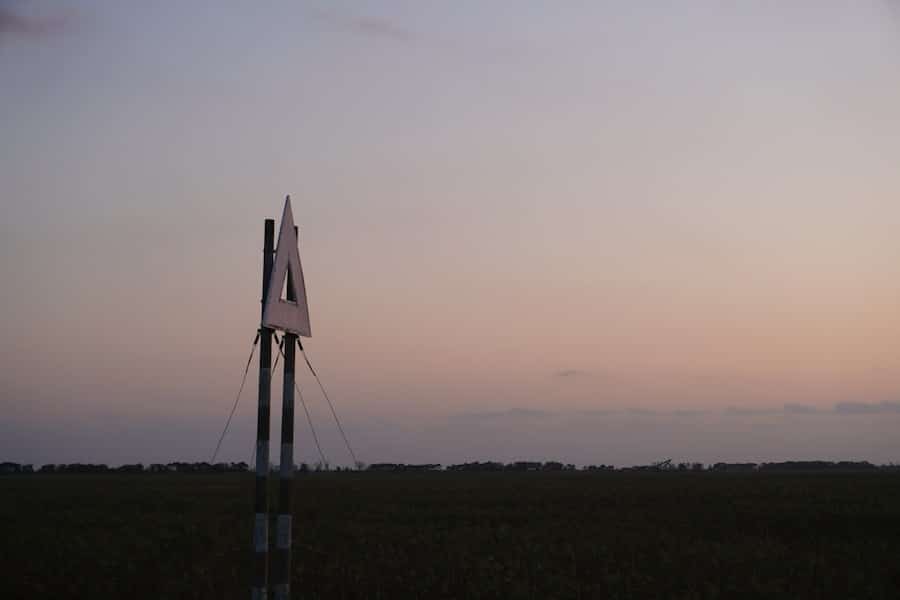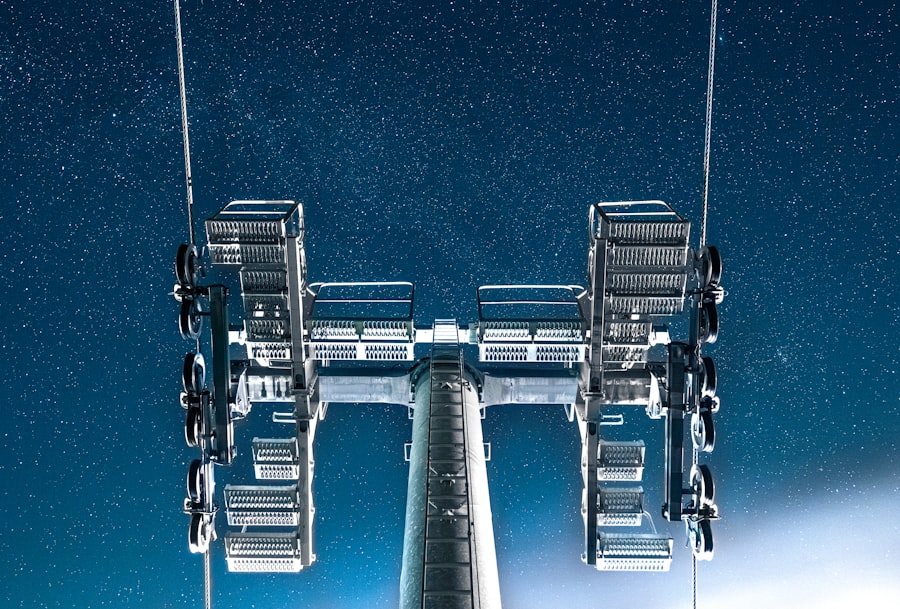As humanity’s ambitions in space continue to expand, the significance of orbital refueling stations has become increasingly apparent. These stations serve as critical infrastructure that can support a variety of missions, from crewed spaceflights to deep-space exploration. The concept of refueling in orbit is not merely a convenience; it represents a paradigm shift in how we approach space travel.
The growing importance of these stations is underscored by the increasing frequency of space missions. With private companies like SpaceX and Blue Origin entering the arena alongside national space agencies, the demand for efficient and sustainable operations in space has never been higher.
Orbital refueling stations can facilitate longer missions, enabling spacecraft to venture further into the solar system without the constraints imposed by limited fuel capacity. This capability is essential for future endeavors such as manned missions to Mars or the establishment of permanent bases on the Moon, where resources must be utilized efficiently to ensure mission success.
Key Takeaways
- Orbital refueling stations are becoming increasingly important for extending the reach and duration of space missions.
- The use of orbital refueling stations can enhance space missions by allowing spacecraft to carry more payload and travel longer distances.
- Orbital refueling stations offer economic and environmental benefits by reducing the need for single-use spacecraft and minimizing space debris.
- Overcoming challenges in orbital refueling technology is crucial for the successful implementation and operation of these stations in space.
- Orbital refueling stations play a key role in advancing space exploration by enabling longer and more ambitious missions.
Enhancing Space Missions with Orbital Refueling Stations
Orbital refueling stations enhance space missions by providing a strategic advantage that can significantly alter mission parameters. For instance, a spacecraft designed for deep-space exploration can launch with a reduced fuel load, relying on the refueling station to top off its tanks before embarking on its journey. This not only allows for a more efficient use of resources but also enables spacecraft to carry additional payloads, such as scientific instruments or supplies for long-duration missions.
The ability to refuel in orbit transforms the logistics of space travel, making it feasible to undertake more ambitious projects. Moreover, orbital refueling stations can facilitate complex mission profiles that involve multiple destinations. For example, a spacecraft could be launched to conduct a flyby of an asteroid, then refuel in orbit before proceeding to Mars.
This flexibility allows mission planners to design more intricate trajectories that maximize scientific return while minimizing costs. The potential for in-orbit refueling also opens up new avenues for collaboration between different space agencies and private companies, as shared infrastructure can lead to joint missions that leverage the strengths of various partners.
Economic and Environmental Benefits of Orbital Refueling Stations

The economic implications of orbital refueling stations are profound. By reducing the amount of fuel required for launches, these stations can significantly lower the overall cost of sending payloads into space. Traditional launch vehicles must carry all their fuel from the Earth’s surface, which requires substantial energy and resources.
In contrast, with an orbital refueling station, spacecraft can launch lighter and more efficiently, leading to reduced launch costs and increased frequency of missions.
In addition to economic benefits, orbital refueling stations also present environmental advantages.
The reduction in fuel requirements translates to fewer emissions associated with rocket launches. Traditional rocket fuels often have significant environmental impacts, both in terms of carbon emissions and other pollutants released during launch. By enabling more efficient fuel usage and potentially utilizing greener fuels in orbit, these stations could help mitigate some of the environmental concerns associated with space travel.
Furthermore, as technology advances, there is potential for developing sustainable practices around resource utilization in space, such as using in-situ resources from celestial bodies for refueling purposes.
Overcoming Challenges in Orbital Refueling Technology
Despite the promising prospects of orbital refueling stations, several challenges must be addressed to make this technology a reality. One of the primary hurdles is the development of reliable and safe refueling mechanisms that can operate in the harsh environment of space. The process of transferring fuel between spacecraft involves complex engineering challenges, including ensuring compatibility between different fuel types and managing the risks associated with handling volatile substances in microgravity conditions.
Another significant challenge lies in the logistics of establishing and maintaining orbital refueling stations. The construction of such facilities requires substantial investment and international collaboration. Questions surrounding ownership, governance, and operational protocols must be resolved to ensure that these stations can function effectively as shared resources.
Additionally, advancements in automation and robotics will be crucial for enabling efficient refueling operations without requiring extensive human intervention, thereby reducing costs and risks associated with crewed missions.
The Role of Orbital Refueling Stations in Space Exploration
Orbital refueling stations are poised to play a transformative role in the future of space exploration. By providing a reliable means of extending spacecraft range and capabilities, these stations will enable missions that were previously deemed impractical or impossible. For instance, crewed missions to Mars could benefit immensely from the ability to refuel en route, allowing astronauts to carry out extensive scientific research without the constant worry of fuel limitations.
Furthermore, orbital refueling stations could serve as staging points for deeper exploration into our solar system and beyond. They could facilitate missions to distant planets or moons by allowing spacecraft to gather momentum through gravitational assists while maintaining sufficient fuel reserves for their journeys. This capability would not only enhance our understanding of celestial bodies but also pave the way for potential colonization efforts as humanity seeks to establish a presence beyond Earth.
Orbital Refueling Stations and National Security

The strategic implications of orbital refueling stations extend into the realm of national security as well. As nations increasingly recognize the importance of space as a domain for both commercial and military operations, having access to reliable refueling infrastructure becomes a matter of national interest. Countries that invest in orbital refueling capabilities may gain a significant advantage over others in terms of their ability to deploy satellites or conduct military operations in space.
Moreover, orbital refueling stations could play a crucial role in enhancing satellite resilience and responsiveness. In times of conflict or crisis, nations could quickly reposition or resupply their satellites without needing to launch new vehicles from Earth. This capability would allow for greater flexibility in responding to emerging threats or natural disasters, reinforcing the strategic value of maintaining a robust presence in low Earth orbit.
Collaboration and International Relations in Orbital Refueling
The establishment and operation of orbital refueling stations will necessitate unprecedented levels of collaboration among nations and private entities. Given the high costs and technical challenges associated with building such infrastructure, international partnerships will be essential for sharing resources, expertise, and funding. Collaborative efforts could lead to standardized protocols for refueling operations, ensuring safety and efficiency across different spacecraft and nations.
International relations will also play a pivotal role in determining how orbital refueling stations are governed and utilized. As countries vie for dominance in space exploration, establishing cooperative agreements will be crucial for preventing conflicts over access to these vital resources. Initiatives like the Artemis Accords aim to create frameworks for responsible behavior in space activities, including resource utilization and environmental stewardship.
Such agreements could pave the way for a more collaborative approach to managing orbital refueling stations as shared assets that benefit all parties involved.
The Future of Orbital Refueling Stations in Space Industry
Looking ahead, the future of orbital refueling stations appears promising as technological advancements continue to unfold. Innovations in propulsion systems, fuel storage technologies, and automated systems will likely enhance the feasibility and efficiency of these stations. As more nations and private companies invest in space infrastructure, we may witness a proliferation of orbital refueling capabilities that support an expanding array of missions.
The integration of orbital refueling stations into the broader space economy could also lead to new business models centered around providing refueling services for various spacecraft operators. Companies specializing in this area may emerge, offering competitive pricing structures that encourage more frequent launches and diverse mission profiles. As humanity continues its journey into space, orbital refueling stations will undoubtedly become integral components of our expanding presence beyond Earth, shaping the future landscape of exploration and commerce in the cosmos.
In the rapidly evolving landscape of space exploration, the concept of orbital refueling stations is gaining traction as a mission-critical component for future space missions. These stations promise to extend the operational life of spacecraft, reduce costs, and enable more ambitious missions beyond Earth’s orbit. A related article that delves into the technological advancements necessary for such innovations is Best Free Software for 3D Modeling in 2023. This article explores the cutting-edge software tools that are pivotal in designing and simulating the complex structures required for orbital refueling stations, highlighting the intersection of software development and space technology.
FAQs
What are orbital refueling stations?
Orbital refueling stations are facilities located in space that are used to store and transfer propellant to spacecraft. They are designed to enable spacecraft to refuel and continue their missions without having to return to Earth for refueling.
Why are orbital refueling stations important?
Orbital refueling stations are important because they enable spacecraft to extend their operational lifespans and reach farther destinations in space. They also reduce the need for costly and time-consuming launches of fully fueled spacecraft from Earth.
How do orbital refueling stations work?
Orbital refueling stations work by storing propellant in space and transferring it to spacecraft that dock with the station. The propellant is then used to refuel the spacecraft, allowing it to continue its mission.
What are the potential benefits of orbital refueling stations?
The potential benefits of orbital refueling stations include reduced costs for space missions, increased flexibility in mission planning, and the ability to reach more distant destinations in space. They also have the potential to enable the development of in-space infrastructure and support future human space exploration missions.
What are the challenges associated with orbital refueling stations?
Challenges associated with orbital refueling stations include the development of reliable and efficient refueling technologies, the need for international cooperation in space, and the management of orbital debris and space traffic around the stations. Additionally, ensuring the safety and security of the stations and their operations is a critical consideration.

